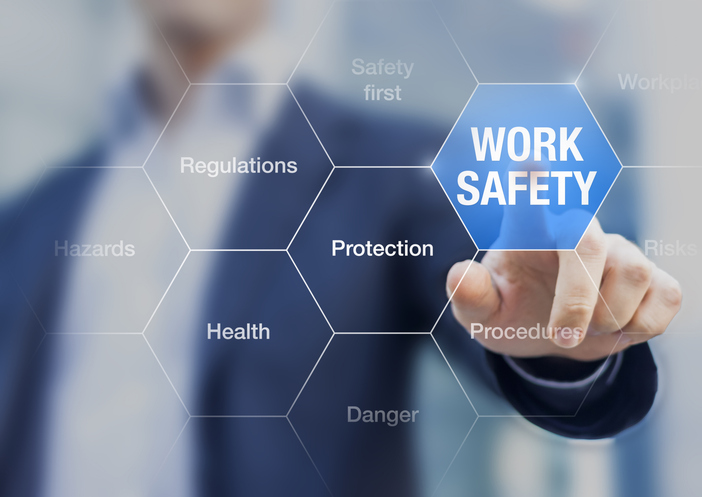Analyzing the Influence of Office Culture on the Success of Violence Avoidance Initiatives and Staff Member Well-Being
The intersection of workplace society, physical violence prevention efforts, and staff member wellness warrants cautious exam, as these aspects collectively influence organizational success. A culture that prioritizes open communication and psychological security can empower staff members to identify and report potential risks, therefore fostering an environment helpful to both psychological wellness and effective violence avoidance methods. The nuances of just how these variables communicate continue to be diverse and complicated. Comprehending the specific systems at play can reveal critical understandings that might inform future campaigns and drive meaningful change within companies. What hidden characteristics may be influencing these end results?
Comprehending Office Society
Often, workplace culture serves as the foundation for worker communications and general business behavior. It includes the shared worths, beliefs, and methods that form the setting in which staff members run.

Organizations must analyze their existing workplace culture to recognize locations for enhancement. This assessment can involve surveys, focus teams, or one-on-one conversations. By acknowledging the cultural dynamics at play, companies can implement targeted treatments that promote a much safer and a lot more respectful job setting, inevitably minimizing the threat of violence in the work environment.
Duty of Worker Wellness
A favorable work environment society not only affects business behavior yet also dramatically effects worker health. When staff members feel valued and appreciated, their general work satisfaction boosts, causing improved mental and psychological health and wellness. This, in turn, fosters a sense of belonging and commitment, which is crucial for lasting engagement and productivity.
Moreover, an encouraging social setting advertises open communication, making it possible for employees to seek and reveal concerns assistance without worry of preconception. This visibility is important in resolving issues associated with stress, exhaustion, and interpersonal problems, which can detrimentally impact both specific well-being and business consistency.
Additionally, companies that prioritize employee wellness usually see reduced absenteeism and turnover prices. Healthy and balanced workers are much more resilient and much better outfitted to take care of office challenges, adding to a more productive and secure labor force.
Spending in worker wellness via campaigns such as wellness programs, psychological health sources, and flexible working arrangements can develop a positive responses loop, boosting both private gratification and collective organizational success (california workplace violence prevention). Inevitably, prioritizing employee wellness is not simply an ethical imperative; it is a strategic strategy that profits the entire organization
Violence Avoidance Techniques
Implementing efficient violence avoidance strategies is important for keeping a safe and healthy and balanced workplace atmosphere. Organizations needs to take on a thorough strategy that includes policy development, employee training, and positive interaction. Developing clear workplace physical violence plans is the primary step, making sure that all workers comprehend acceptable habits and the repercussions of offenses.
Educating programs must be developed to educate workers regarding identifying warning indicators of prospective violence, problem resolution methods, and emergency reaction procedures. Regular drills and simulations can enhance readiness, fostering a culture of recognition and responsibility.
In addition, promoting open interaction networks encourages employees to report issues without concern of retaliation. This can be assisted in with anonymous coverage systems or normal responses sessions. Additionally, promoting a supportive workplace culture that values respect and inclusivity can considerably alleviate the risk of physical violence.
Organizations ought to also participate in regular analyses of their workplace culture and violence prevention techniques, adjusting them to developing requirements. By prioritizing these approaches, business not just shield see this their staff members however also enhance general well-being, inevitably adding to an extra productive job atmosphere.
Gauging Social Effect
Determining the effect of workplace culture on physical violence prevention efforts is vital for understanding the efficiency of present strategies and determining locations for enhancement - california workplace violence prevention. To attain this, companies need to use a diverse approach that integrates qualitative and quantitative methods. Studies and link analyses can collect information on staff member understandings of workplace support, safety, and inclusivity systems, while case reports give concrete evidence of violence incidents and their context within the organizational society
Additionally, emphasis teams and interviews can disclose deeper understandings into employees' experiences, beliefs, and perspectives surrounding violence prevention initiatives. Evaluating this qualitative data helps companies to pinpoint cultural strengths and weak points that might either promote or prevent efficient avoidance techniques. Additionally, benchmarking versus sector standards enables comparative analysis, aiding organizations gauge their performance about peers.

Creating Encouraging Atmospheres
Frequently cultivating a helpful environment within the workplace is crucial for effective physical violence avoidance. Such atmospheres encourage workers to communicate freely concerning their experiences and problems, consequently identifying potential concerns prior to they rise. A society of assistance enhances depend on among employee, motivating partnership and positive analytic.
To produce a helpful setting, companies must prioritize training programs that concentrate on problem resolution, emotional intelligence, and energetic listening. These abilities furnish workers to take care of social relationships constructively, minimizing the probability of misconceptions that could result in physical violence - california workplace violence prevention. Furthermore, implementing mentorship programs can provide staff members with support and reassurance, adding to their general well-being
Leadership plays an important duty in shaping an encouraging office society. By modeling compassionate behavior and showing a commitment to worker well-being, leaders set a tone that motivates others to do the same. Regular feedback systems, such as confidential surveys, can also help determine staff member belief and emphasize locations for improvement.
Ultimately, an encouraging setting not only minimizes the risk of physical violence however also enhances employee morale, task satisfaction, and performance, strengthening the company's dedication to promoting a risk-free and successful workplace.
Final Thought
A favorable workplace society significantly affects both physical violence prevention efforts and staff member well-being. By fostering open interaction and motivating the coverage of issues, companies can improve mental health and task fulfillment amongst staff members. A helpful culture enhances the performance of physical violence avoidance techniques by advertising the prompt recognition and attending to of caution signs. Eventually, growing such an atmosphere works as a critical foundation for effective interventions and adds to the total success of the company.
The intersection of workplace culture, physical violence avoidance efforts, and worker well-being warrants mindful examination, as these components jointly influence business success. A culture that prioritizes open interaction and psychological safety can encourage staff members to determine and report prospective dangers, thus promoting an environment favorable to both psychological wellness and reliable violence avoidance approaches.A favorable workplace culture not just influences organizational behavior however likewise significantly effects employee health. Surveys and assessments can gather information on employee assumptions of work environment inclusivity, assistance, and safety systems, while case records offer concrete evidence of physical violence have a peek at this site occurrences and their context within the organizational society.
A favorable office society significantly affects both physical violence prevention efforts and worker health.